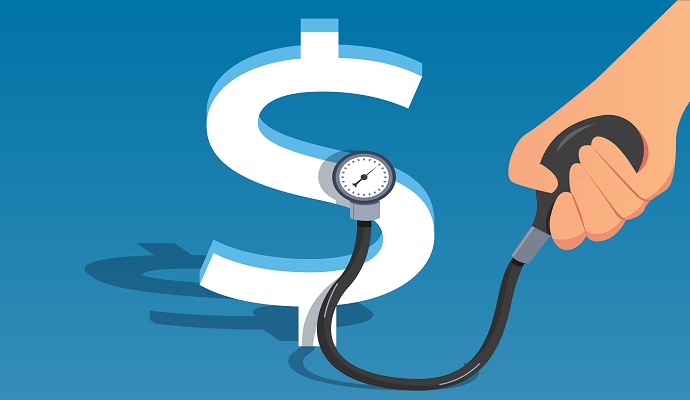Hospitals Closed 2019 with An Uptick in Volume, Patient Revenue
Hospitals saw a boost in hospital profitability in December 2019, with volume and patient revenue rising despite a slight increase in supply expense.

Source: Getty Images
- Hospitals nationwide ended 2019 with an increase in hospital profitability, with increases in both net patient revenue and service volumes, according to a recent Kaufman Hall report.
According to December 2019 data from over 800 hospitals, hospitals nationwide saw an uptick in margin results following a substantial decline in November.
Operating earnings before interest, taxes, depreciation, and amortization (EBITDA) margins rose 136.9 basis points (bps) year-over-year. This meant that hospitals saw their first year-over-year operating EBITDA margin increase in six months. Hospital operating margins also increased by 171.8 bps compared to November 2019.
There were many contributing factors to these increases including higher volumes and revenues, the report showed. This growth also occurred despite increases in bad debt and charity care, as well as mixed performance on expenses, the report highlighted. The particular volume increases included adjusted discharges, emergency department (ER) visits, and operating room (OR) minutes.
The consulting firm uncovered that hospitals saw increases at the close of the year after reporting major declines the month before. Specifically, OR visits had the most significant increase year-over-year at 5.7 percent.
Additionally, Emergency Departments (ED) saw the greatest month-over-month increase at 11.3 percent, while average length of stay (LOS) slightly increased by 0.5 percent year-over-year. This is a significant change from an October 2019 Kaufman Hall report which uncovered that ED visits and LOS fell by 0.1 percent and 0.8 percent year-over-year, respectively.
But not all hospital profitability metrics experienced favorable changes in 2019. For example, although labor expenses per adjusted discharge fell 1.9 percent month-over-month, spending on labor increased by 1.3 percent year-over-year, the report found. And non-labor expense per adjusted discharge rose by 0.7 year-over-year despite dropping 1.7 percent month over month.
Drug expense per adjusted discharge in October was also 2.2 percent year-over-year, a modest decrease from 2018. But the December 2019 data found that drug expense saw the biggest year-over-year increase at 9.7 percent, while supply expense per discharge was up 6.2 percent year-over-year.
These findings were similar to the October report which uncovered that labor expenses rose by 1.4 percent by October of last year, but decreased 1.1 percent month-over-month.
The report also found that hospital discharge declined greatly compared the previous report. Hospitals reported a 1.5 percent year-over-year decrease compared to a 0.4 percent the previous month. Adjusted discharge also rose by 2.3 percent year-over-year and 3.8 percent month-over-month, a few decimal point decrease from the last report.
The Kaufman Hall report also touched on December revenue performance, which was slightly mixed. Net Patient Service Revenue (NPSR) per adjusted discharge was up 3.3 percent year-over-year, a 1.5 percent increase from the October report. And NPSR was up by 1.2 percent month-over-month, performing 1.0 percent to budget.
As for national observations in the coming year, hospitals across the country are expected to see margins increase year-over-year, but decrease month-over-month in February. And hospitals in the Great Plains, South, and Midwest are all projected to see year-over-year increases, but month-over-month decreases in operating EBITDA margin, the report showed.
“This is welcome news after volume and revenue declines and higher-than-expected expenses weakened November performance,” Jim Blake, managing director and publisher at Kaufman Hall, stated in the report. “For next month, hospitals anticipate mixed results, with margin increases year over year, but decreases month over month.”
